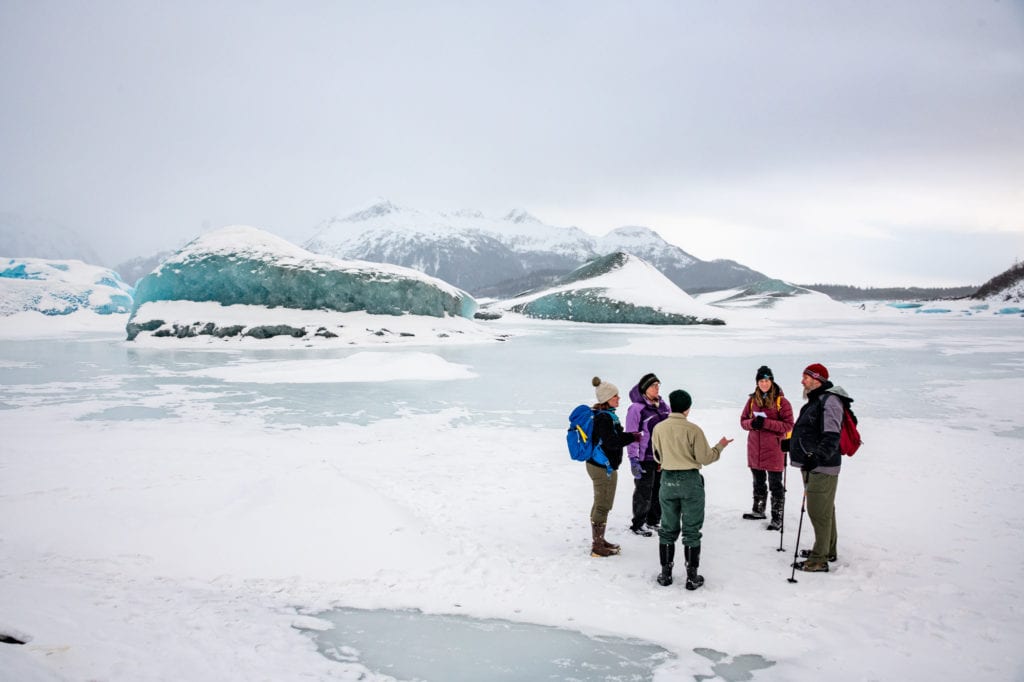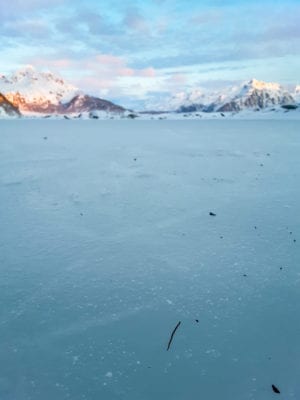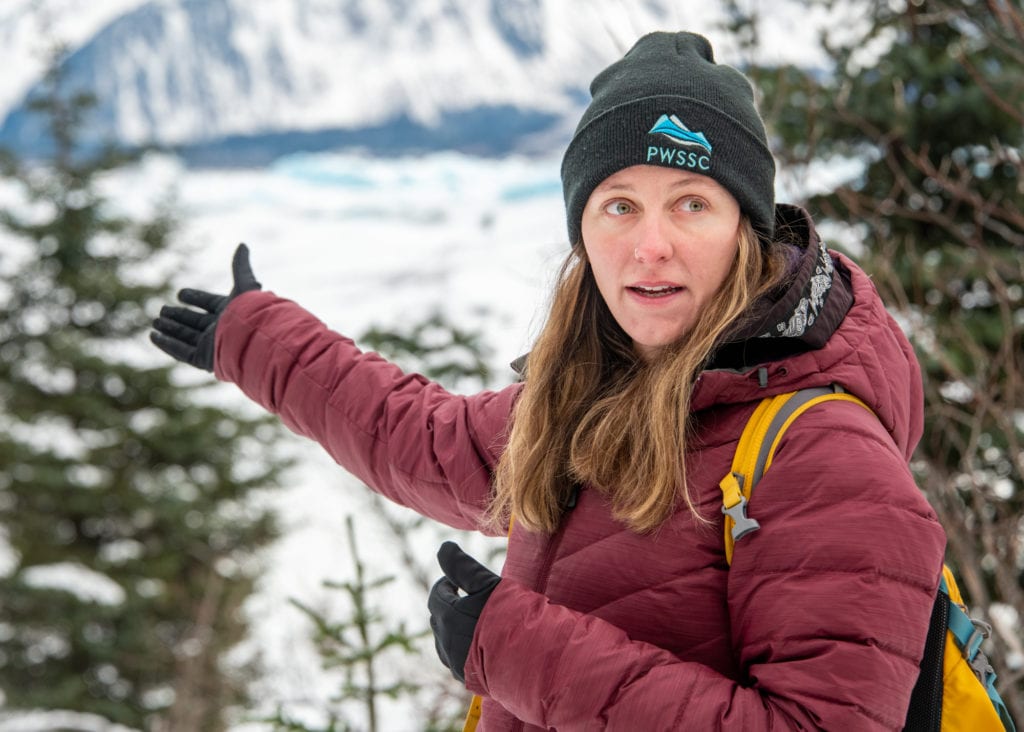
For all its popularity, little is known about the elusive ice worm. No one has witnessed them reproduce or knows quite how long they live. Perhaps this is why, in 60 years, Cordova Iceworm Festival has included relatively little scientific information on its mascot.
This year, the worm finally turned, as the U.S. Forest Service and Prince William Sound Science Center collaborated to stage an educational hike at Sheridan Glacier. At the head of the Saturday, Jan. 25 excursion were Erin Cole, Forest Service developed recreation program coordinator, and Lauren Bien, PWSSC education director. Putting together a curriculum for the hike was challenging, as our understanding of the ice worm is so sketchy, Cole said. While some researchers have encountered tens of thousands of ice worms congregating in a single patch, it’s more common to spend an entire day scouring a glacier and finding nothing.
Ice worms have drawn the attention of scientists with their unusual physiology, which includes an “antifreeze” protein in their blood. While most organisms lose energy in icy conditions, ice worms actually gain energy, up to a point, according to a Forest Service report.
It’s unclear just how vital to the ecosystem ice worms are, Cole said, although they do serve as a food source for birds like the snow bunting and gray-crowned rosy finch. Ice worms, themselves, feed on “watermelon snow,” a reddish-colored snow algae. Ice worms begin to liquefy around 40 degrees Fahrenheit and, like polar bears and other ice-dwelling creatures, have been forced to adapt to habitat loss caused by climate change.

Cole had an unexpected encounter with an ice worm Jan. 20, while clearing trail for the hike. Cole and USFS Trails Coordinator Bobby Scribner crossed paths with hikers near Sheridan Glacier who said they’d seen an ice worm and marked the spot with sticks. When Cole and Scribner found the worm, it was crawling along at the lazy 10 feet per hour typical of the species. After researching ice worms at length, it was exciting to come face-to-anterior with one in the wild.
The Jan. 25 interpretive hike used visual aids and other educational gimmickry to help make information about ice worms memorable. A bristle hairbrush was used to illustrate the tiny hairs used by ice worms to pull themselves along the ice. As Cole pointed out, one is more likely to remember the image of a hairbrush sitting on the snow than to remember a fact recited from a piece of paper. At the conclusion of the event, hikers, like ice worms, dined on watermelon.

It was challenging to convince residents to attend an event so far out of town, Cole said. The narrow, deeply snowed road connecting the Sheridan Glacier trailhead to the Copper River Highway also posed an issue for the hike. The event was delayed by more than an hour after an SUV driven by the author of this story became stuck in snow along the road, and vehicles attempting to leave the glacier came head-to-head with vehicles traveling toward it. Next year, Cole hopes to advertise the event more widely and to distribute more information regarding road conditions.
“I hope people took away an appreciation of the forest,” Cole said. “If they get some information about ice worms, great, but I still really do love connecting people to the national forest and public land in general. This is land that’s owned by everyone in the United States — it’s awesome.”





